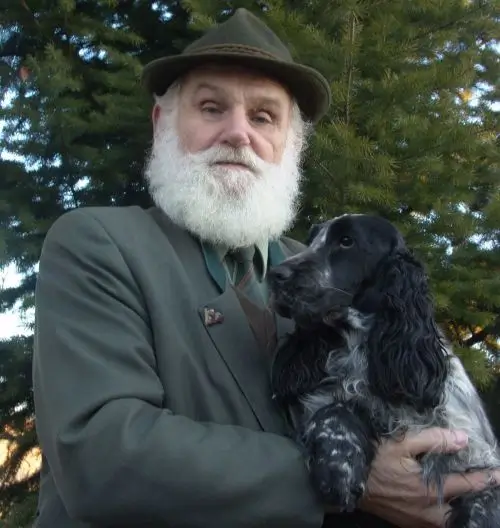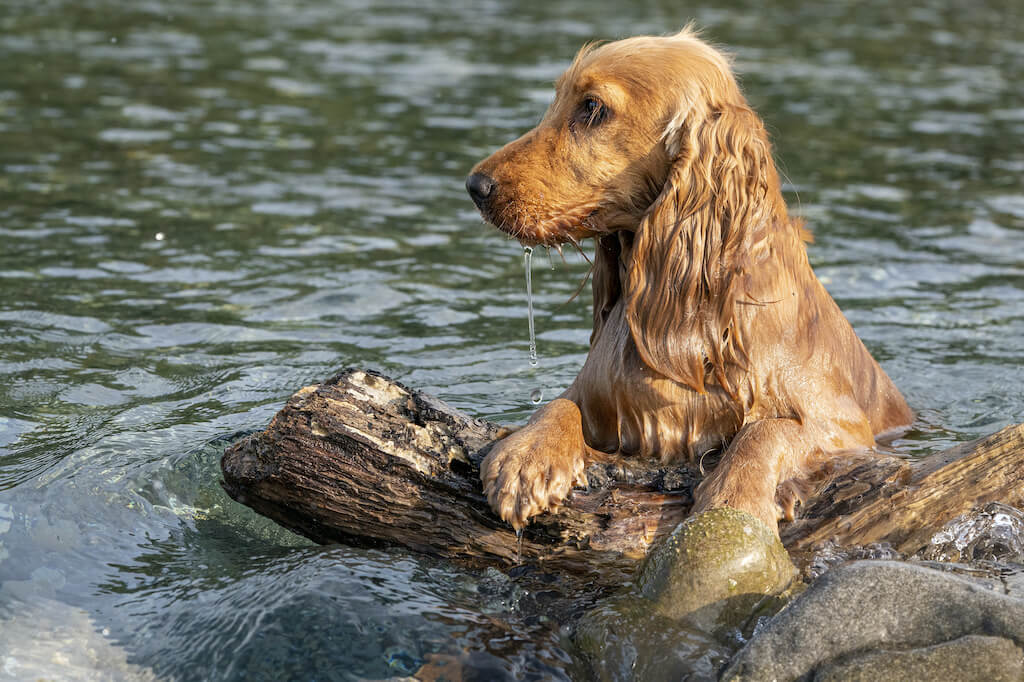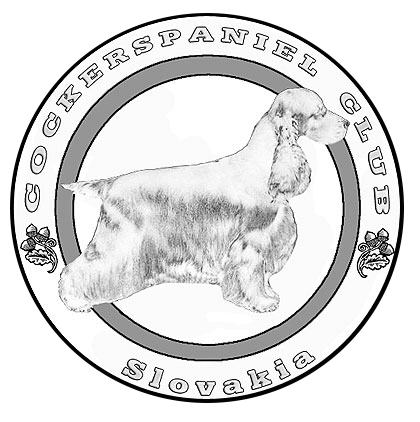Origin
Great Britain. The most famous and the most expanded but the oldest and the most aboriginal spaniel is the English cocker spaniel.
With the exception of the Welsh Springer Spaniel, the spaniels of the century were only divided into water and field (for the first time in the literature in 1386). In 1859, during the first dog shows in
England, spaniels were divided into 2 basic groups: field spaniels (field), cocker spaniel and Sussex spaniel as small, clumber spaniel as large.
The spaniels were differed according to the weight (above and under 25 pounds) till the year 1870. The way of hunting participated mainly on the next partitions.
It is supposed that the name Cocker spaniel is deduced from the way of the hunting application, mainly hunting of a woodcock. J. Watson published the opinion in 1907 that the name cocker spaniel was created by deduction from the name cock shooting. This is supported by the fact that the hunting spaniels were used for the work in the scrubs and shrubberies during hunting the feather in the past.
Soon the cocker spaniels were accounted as famous dogs after the recognition of the breed mainly apart from England and they were raised for their familiarity and docility as luxurious dogs what was manifested mainly in America in the appearance of the American cocker spaniel.
Breed development
The Spanish may have arrived in England during Caesar’s invasion (54–55 BC). It is believed that the spaniel originated in Spain, since the word spaniel may be derived from hispania (Spain) or perhaps from the French term Chiens de l’ Espagnol (Spanish dog). The Spaniards were specially bred to drive game out of dense vegetation. At the end of the 16th century, spaniels were divided into aquatic and terrestrial breeds.
The English Water Spaniel (extinct) was used to bring waterfowl shot down by arrows. Land spaniels were further divided into setters and springers.
Springer spaniels laid the foundations of all modern spaniels. In one litter of springer spaniels, larger pups became springer spaniels, smaller pups became cocker spaniels, medium-sized pups became sussex spaniels: the only difference was the size itself.
The prototypes of modern cocker spaniels were Obo I (1879), the ancestor of today’s English Cocker Spaniel, and Obo II,considered the father of American Cocker Spaniels. Obo I. was a descendant of a cross between a Sussex spaniel and a field spaniel. The difference between English and American Cocker Spaniels is that the American Cocker Spaniel was bred more for showing off at exhibitions than for hunting.
Before 1892, Cocker Spaniels were not specifically bred as such, or recognized as a separate breed by the English Kennel Club. One litter of springer spaniel produced three types of dogs (springer, sussex and cocker). One litter of springer spaniel produced three types of dogs (springer, sussex and cocker). The shows in England were confusing because the young were entered as cockers one year and springers the following year as they grew.
As author Jeff Griffren wrote, “the American version became smaller and more beautiful,” while “the English version became more and more powerful.” Indeed, English Cocker Spaniels more closely resemble their cousin, the English Springer Spaniel.
In 1893, the English Cocker Spaniel was recognized by the English Kennel Club as a separate breed.
In 1901, the abolition of the weight rule was enforced, when type rather than weight began to be considered more important.
In 1902, the first breed standard was created, this standard applies basically unchanged to this day.
In 1933, color variants of cockro (monochrome and multi-color) were recognized, this basic division of colors is still valid today
History of the breed in Slovakia
The development of the breed in Slovakia was largely due to one of the nestors of Slovak and Czech cynology, Mr. Albín Luknár (1933-2021). He was the owner of the kennel “from Demänovská”, protected name from 1963. He was the judge for all types of dog hunting trials and the first “ALLround” judge for the exterior. Even during the era of Czechoslovakia, he managed to import more dogs, later breeding individuals and thus improve the quality of cocker breeding in Slovakia. For many years he was the chairman of the club of hunting hens within the Czechoslovak Socialist Republic and then the chairman of the KCHPS.


